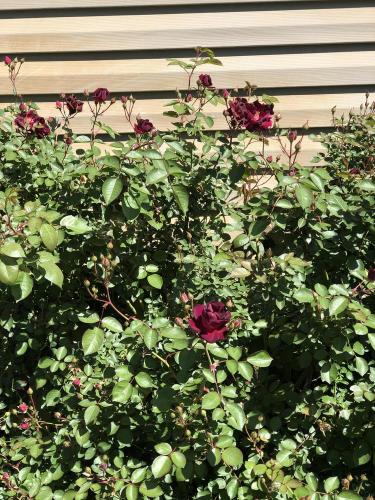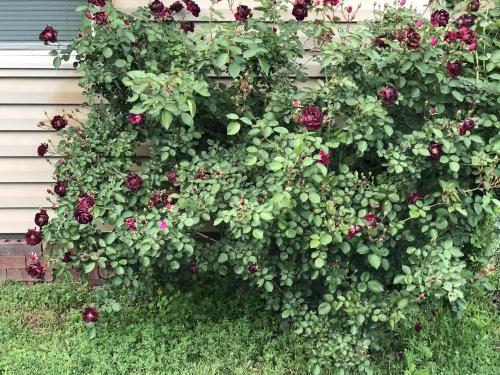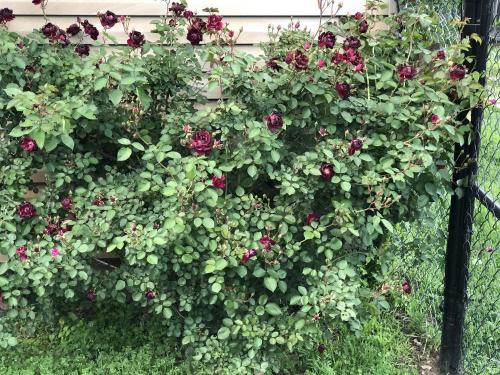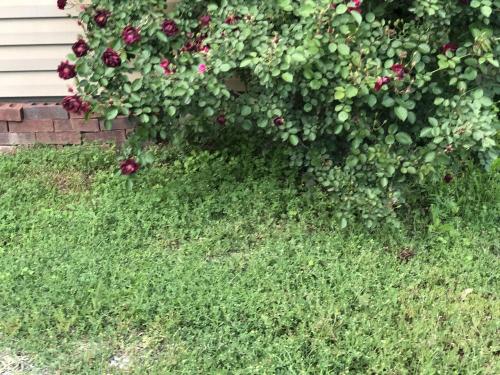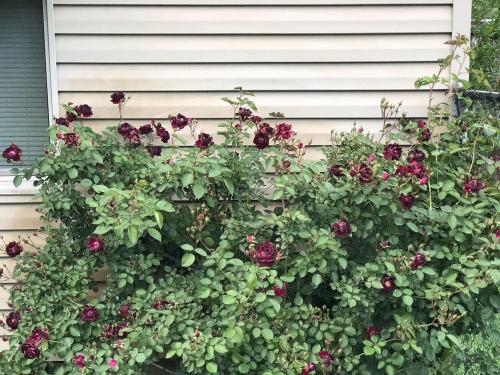First, from your photos, it appears the rose is Dr. Huey, the rootstock upon which the roses purchased were budded. "Suckers", growths from the stocks, have overtaken the scion, the desired rose which was purchased and planted. It may remain somewhere in that tangle or it may be dead. Only cutting the thing back until you find the bases of the plants to determine if there is anything other than Huey will tell. As far as how the flowers appear, they look pretty typical Dr Huey to me from your photos. You can either allow that rose to remain, where it will flower this time of the year and probably not any other time of the year, and, unless you happen to be in a climate in which Huey is happy, it's highly liable to mildew, black spot and rust. The rose was a break through in roses nearly a hundred years ago when it was introduced. A popular type was called "Dooryard Roses", shorter climbers which could be constrained to porch posts around the front doors of homes. Traditionally, those were pastel colors. Dr. Huey was the first dark colored Dooryard Rose and was named for a prominent rosarian of the time. A mix up in the growing fields, reportedly at Armstrong Roses around WWII, resulted in cuttings being taken of Dr. Huey instead of the traditionally used "Ragged Robin" and put into production. It wasn't until those on the Dr. Huey roots actually performed better than the Ragged Robin based plants, the mistake was determined and chosen to become the standard of the US industry. If you decide to remove it, be forewarned, Dr. Huey is virtually IMMORTAL and may well require the application of Round Up to kill it. The smallest roots remaining in the soil very frequently regenerate the entire mass. Where and when it is happy, it's pretty. Unfortunately, there's no way to know with certainty until you see it looking terrible. Should you remove it successfully, planting own root roses of a type determined to be successful where you are will eliminate the problem of root stock suckers and their taking over the desired rose. Good luck!

